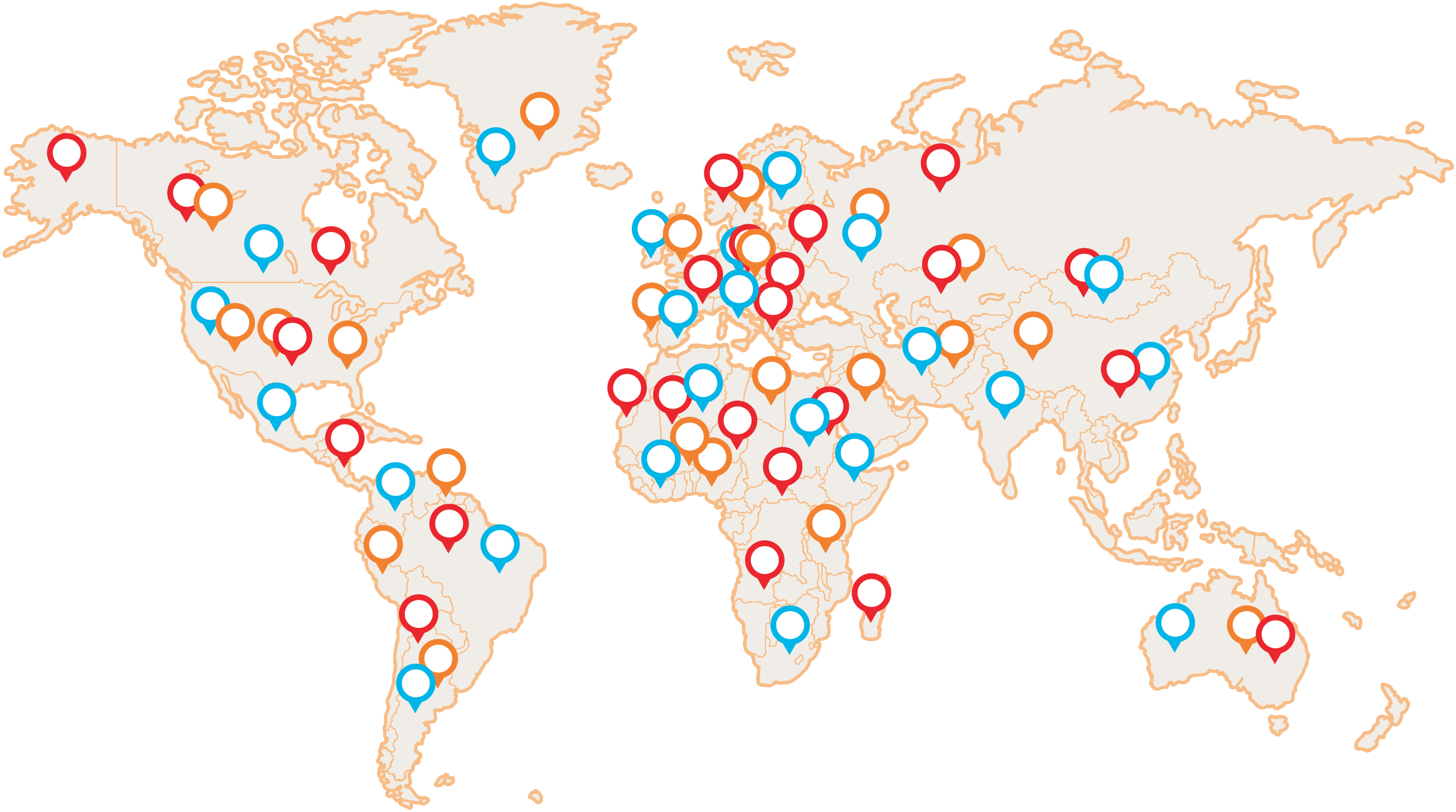I often get the question whether our reishi can be of good quality when it is grown in China. The Chinese are now known for their not-so-ecological approach to their surroundings and also to nature. So we set out to find out the truth for ourselves.
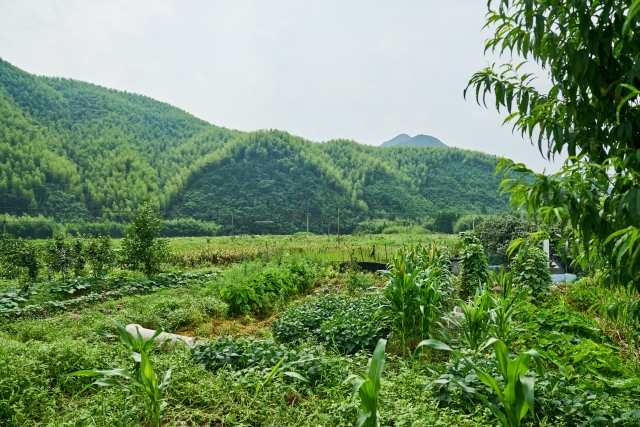
Apart from me, selected members of MycoMedica (i.e. me and my three sons) and a colleague from our German partner company Alexander took part in the expedition. Many of you may know him. He is the one who comes to our seminars to give lectures on mushrooms.
We survived the flight quite well. Although the seven-hour wait at the Moscow airport was certainly not one of the highlights of our trip.
In Shanghai we finally met Alexander and also our Chinese partners Sofia and Devlin. You may find their names a bit un-Chinese, but it is a common custom in China that people often use Western names when communicating with us Westerners, as theirs are often unpronounceable to us...
China has given mankind many useful things. Silk, paper, coffins, gunpowder, Chinese medicine... And of course, perhaps the greatest invention of all, Chinese cuisine...
We all fell in love with it immediately. Except for the youngest, who kept looking for the next McDonalds.
And that's why we couldn't help but start our journey in the restaurant at a round table...
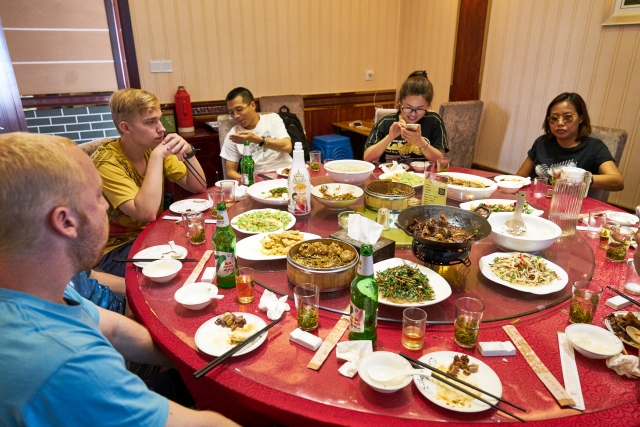
The next day we managed to get up on time despite the unpleasant jetlag, and so we set off into the Chinese hinterland in search of our destination, the reishi mushroom.
I've been to China several times now, and each time I visit, I am struck again and again by how quickly the country is changing. Technology and other advances in civilization are increasingly replacing the traditional way of life. Which can't always be called progress.
Fortunately, we soon left the sprawling conurbation of Shanghai for more sparsely populated areas.
I like the Chinese. If you get to know them they are very friendly and warm. What they usually are not, however, is GOOD DRIVERS !!! I often get upset about the traffic situation here in the Czech Republic, but in China I really got my hair standing on end sometimes. On the highway, everyone drives on the left (in the fast lane) on principle and overtakes on the right, where of course trucks drive ! And our driver couldn't always tell if he could still make the overtake. So it was a very fast, brake-and-throttle style of driving. Surprisingly, we didn't see a single accident.
After seven hours of driving, we finally reached the mountains of the Hangzhou area. And I have to admit, beautiful mountains. Not high, but impressive. The hills were lined with rice paddies. In the valleys flowed clear turquoise water. A little paradise on earth.
In the early evening, we had our first major stop. It was a farm specializing in shiitake mushrooms. But we arrived at the wrong time because the shiitake hadn't started growing yet. It was just a journey for us and it was a pity not to take advantage of such an opportunity. Here too we got a lot of interesting information for us. How shiitake is grown, how it is staked in bags with substrate, how they use trout to keep the water clean...
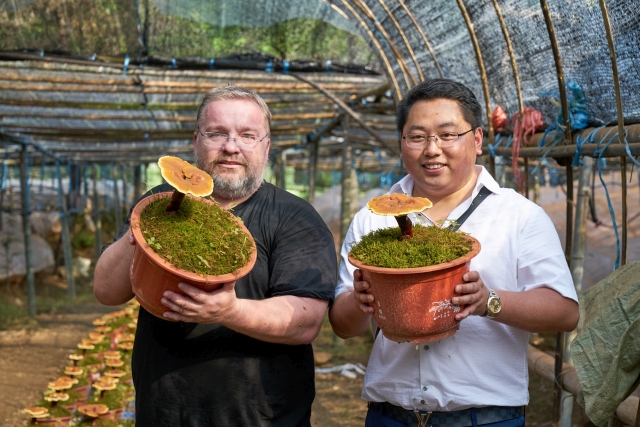
On the third day we got up very early in the morning. Gradually we finally reached the mountainous area of Anhui province. After a journey of about four hours, we arrived in the "reishi capital". A town where they have at least 600 years of experience in growing reishi. And here we had to switch to off-road jeeps to get to the reishi cultivation site at all. We drove through pristine countryside again, deep mountain valleys. The tarmac ended and we were glad to have good cars, and more importantly, good drivers. After about two hours of a bumpy ride, we got off and had to walk the remaining 2 km. Up the hill... in 35°C and terrible humidity! However, what was a bit of hell for us is exactly the climate that reishi needs to grow.
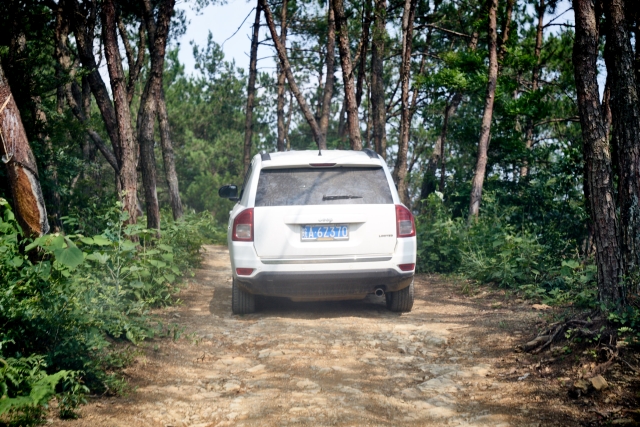
And then came what we were all waiting for. The first wild reishi fruits started to appear in the forest among the trees. Reishi, or ganoderma, is not called the queen of mushrooms for nothing. As well as containing an extraordinarily large number of substances beneficial to the human body, it is also incredibly beautiful. We were immediately overcome with photographic passion. Our hosts had to keep urging us on to get any further.
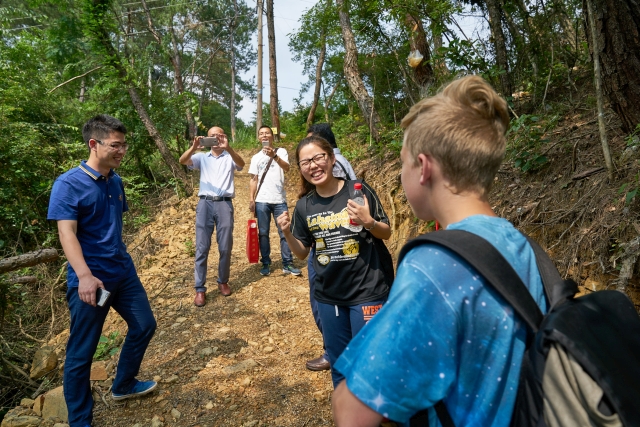
Finally we arrived at the actual farm where they grow the magical reishi in large tents. And in a magical way, too. On wood buried in the ground. The growing time is 6-9 months. Which is the optimum time. Only the fruits are harvested. The mushrooms are usually made up of two parts, the mycelium, the part underground, and the primordium, or fruiting body, the part above ground. The mycelium is basically the roots and the fungus uses them to extract moisture and nutrients from the soil. Some scientists say that it's through the mycelium that individual fungi communicate with each other. It reminds me a bit of the acupuncture pathways where, according to Chinese medicine, Qi energy flows through the body. Like blood in the blood vessels. At a certain point, the energy accumulates and begins to flow to the surface. And that's the acupuncture point. At this point, the energy is very concentrated and strong, so we can use the needles at this point to influence the whole system of our body. The body of the sponge is such an acupuncture point, it accumulates energy that we can use for our healing. The fruiting body must not be too young or too old to contain maximum energy (and active substances). The difference between a young and an old fruiting body is then like the difference between the buds and the leaves of a tree. This is the principle on which gemmotherapy works. Farmers know exactly how long to grow reishi to be optimal in terms of active ingredients. And 6-9 months is just right. If the mushroom is older, it will be harder and the farmer will get more money. However, the energy, as I described above, will not be there as much.
We also discussed with the farmers and with a German colleague the optimal amount of polysaccharides in the resulting extract. They were all clearly inclined to the view that the optimal extract for the treatment of serious diseases is around 25-35% polysaccharides (MycoMedica has around 33%). If there is less polysaccharides in the extract, it is weak. If it has more, it is always at the expense of the other active ingredients, which are no less important for the therapeutic effect. Reishi then moves away from natural reishi and closer to pure betaglucan. Pure betaglucan also has its merits, but it cannot replace the queen of reishi mushrooms.
The farm also uses a sophisticated irrigation system. They use water that comes to the farm from the surrounding mountains and is absolutely pure. Cars are banned from entering the farm to avoid the slightest contamination. However, despite all these conditions, we still check all the mushroom raw material after import to Europe in the German independent laboratory Agrolab.
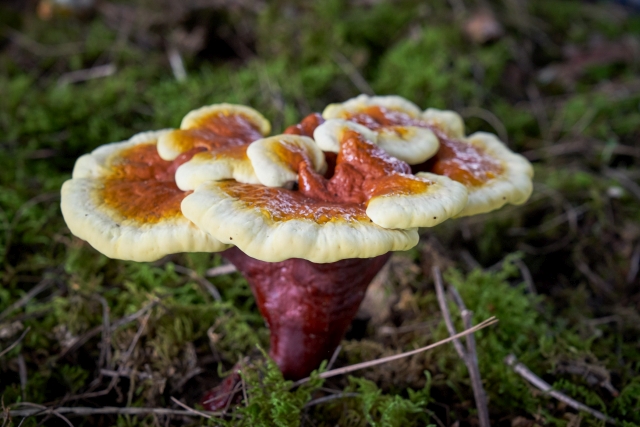
There is also a pond in the middle of the farm, which helps to increase the already high humidity.
It was just an amazing afternoon. We saw the different shapes of reishi, the way it is grown, and most importantly the beautiful and absolutely clean environment.
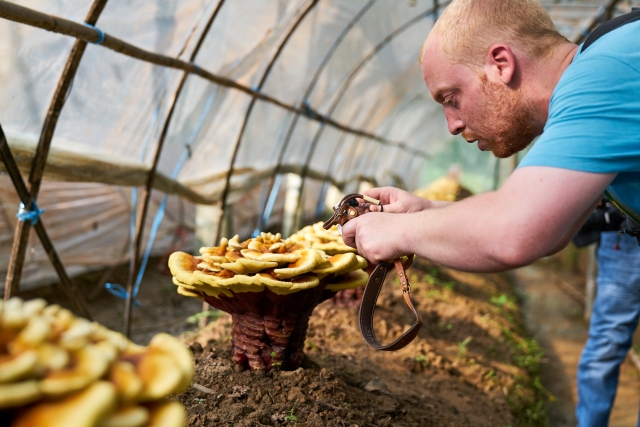
They also grow coriolus mushroom as a by-product here at one point. The one that is so widely used by cancer patients, almost all over the world, and which has been banned here by EU officials (see nedejmesicoriolus.cz).
The people who run the company are very pleasant and live their quiet and leisurely lives. I'm sure this also helps the good energy of our reishi. But on to the processing of the mushroom. After 6-9 months, the reishi is harvested and passed on to the labs. Reishi is usually processed through a double extraction process. First, it is extracted with hot water. Because it contains substances that are not water soluble and we need to release them (so our body can use them), it is extracted in alcohol. At the end of the process, an extract is produced that we use to treat many health problems.
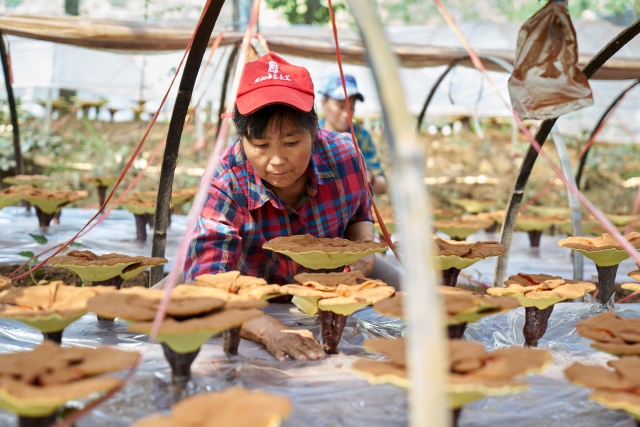
We took over a thousand photos at the farm. While the farmers were very friendly and helpful, they also kept a close eye on us at all times because they are so careful with each crop. It really is very valuable. They especially warned us not to touch the bottom of the hat where the spores are. It could stop them from forming. But they said they don't use the spores themselves for therapy. The whole fruit, including the spores, is more valuable. It's the only way to take advantage of the complex effects of reishi.
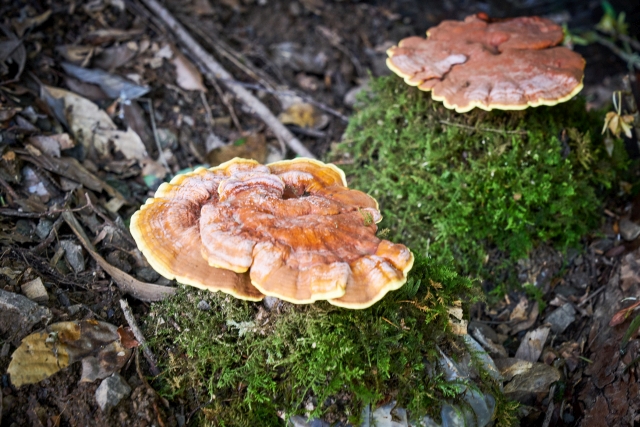
It's time to say goodbye. We walked the few kilometers in the dark. We didn't reach the nearest town until midnight.
Well, there was still time for a hot pot or Szechuan pot.
The next day we said goodbye to our Chinese partners and Alexander and headed towards Beijing. But that's another story...
Nevertheless, I can conclude with a clear conscience that our reishi is grown in an absolutely clean and also beautiful landscape, where the farmers give it the best care it can get. And we were lucky enough to see this for ourselves. And what we saw is perhaps one of the reasons why reishi is our best-selling product.
Actually, along with cordyceps... But maybe next time...
Prepared by: Milan Schirlo and Co.
 Vital mushrooms PRO (17)
Vital mushrooms PRO (17) MyTao Edition (14)
MyTao Edition (14) Vital Mushroom Extracts (25)
Vital Mushroom Extracts (25) Combination of mushrooms and herbs (18)
Combination of mushrooms and herbs (18) Traditional recipes (5)
Traditional recipes (5) BIO vital mushrooms powder (9)
BIO vital mushrooms powder (9) Syrups (12)
Syrups (12) Dried vital mushrooms (6)
Dried vital mushrooms (6) Honey products (5)
Honey products (5) Vitamins (4)
Vitamins (4) BIO green food (2)
BIO green food (2) Other (3)
Other (3)








